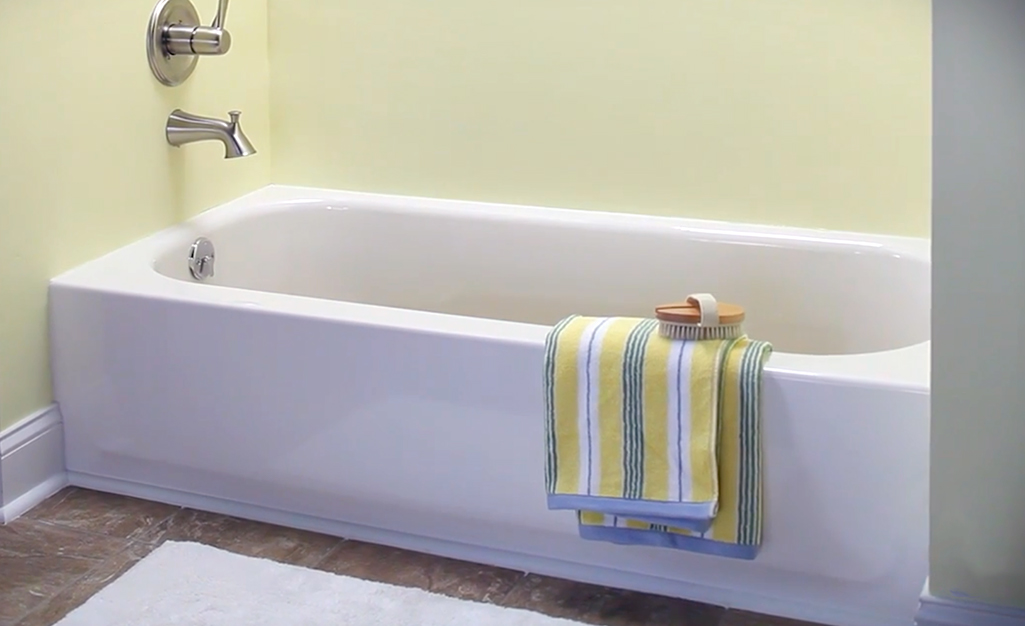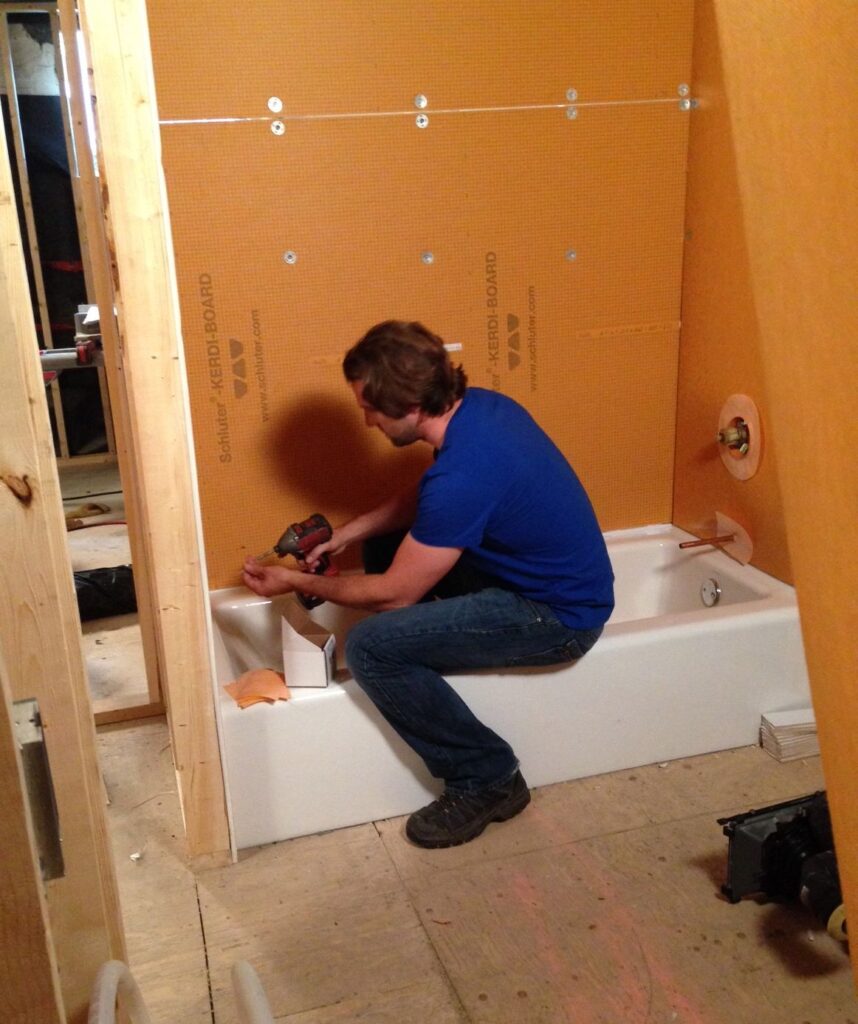Your Plumbing Crash Course: A Necessity for Bathtub Installation
Your Plumbing Crash Course: A Necessity for Bathtub Installation
Blog Article
Have you been in search of facts about Installing A Bathtub?

Setting up a tub isn't specifically brain surgery, however it does need solid plumbing, woodworking, and sometimes, tiling abilities. Changing an old tub with a brand-new one is also a reasonably hard job. If the old bathtub is readily obtainable, the project can move speedily; if you have to open up a wall surface to remove the old tub as well as place the brand-new bath tub, the task is much harder. In either situation, the job is within a residence handyman's abilities, although you will certainly require an assistant to vacate the old bathtub and embeded in the new one. Ensure you have qualified yourself for the job and fit trying it. As opposed to working with a contractor to take over a halfway-completed job, it is far better to consider employing one prior to you begin. Opportunities are you may need an expert plumber to make tube links.
This post will aid you set up a new bathtub in your washroom if you have currently purchased a new tub and do not need to alter the arrangement of your previous water pipes.
Your devices and material list ought to consist of the following:
Removing Old Taps
If you need to change old faucets with brand-new ones as a part of your installment, then the first thing you should do is disconnect the water system. After doing so, switch on the faucets to drain pipes any type of water staying in the system. The procedure of eliminating the existing taps can be rather problematic due to the restricted access that is frequently the case.
Use a container wrench (crowsfoot spanner) or a faucet tool to reverse the nut that attaches the supply pipes to the taps. Have a cloth ready for the remaining water that will originate from the pipelines. When the supply pipes have been eliminated, use the very same device to loosen up the nut that holds the faucets onto the bath/basin. You will certainly require to quit the single taps from turning throughout this process. When the taps have been gotten rid of, the holes in the bath/basin will need to be cleaned of any type of old securing compound.
Prior to moving on to fit the new faucets, contrast the pipeline connections on the old taps to the brand-new faucets. If the old faucets are longer than the brand-new taps, then a shank adapter is required for the new taps to fit.
Suitable New Touches
If the tails of the brand-new faucets are plastic, after that you will certainly require a plastic adapter to stop damages to the string. One end of the connector fits on the plastic tail of the tap and the other end provides a connection to the current supply pipelines.
If you require to fit a monobloc, then you will require reducing couplers, which attaches the 10mm pipeline of the monobloc to the standard 15mm supply pipeline.
Next, position the tap in the mounting opening in the bath/basin ensuring that the washing machines remain in area in between the faucet and also the sink. Safeguard the faucet in place with the supplier given backnut. Once the faucet is firmly in place, the supply pipelines can be linked to the tails of the faucets. The faucets can either be linked by using corrugated copper piping or with normal faucet connectors. The previous kind must be attached to the tap finishes initially, tightening only by hand. The supply pipelines can later on be attached to the other end. Tighten both ends with a spanner after both ends have actually been attached.
Installing the Bathtub
Utilizing both wood boards under its feet, position the bath tub in the called for position. The wooden boards are valuable in uniformly spreading out the weight of the tub over the location of the boards rather than focusing all the weight onto four small points.
The next objective is to make certain that the bath tub is leveled all round. This can be attained by examining the spirit level and adjusting the feet on the bath tub till the spirit level reads degree.
To set up faucets, fit the bottom of the outermost adaptable tap port to the proper supply pipe by making a compression join; then do the very same for the other tap.
Activate the water supply and inspect all joints as well as brand-new pipework for leaks and also tighten them if required. Fill the bath tub as well as also check the overflow electrical outlet as well as the regular outlet for leaks.
Ultimately, fix the bath paneling as explained in the supplier's instruction manual. Tiling as well as securing around the bath tub should wait until the bathtub has been utilized a minimum of when as this will certainly resolve it right into its last setting.
Planning for the Installment
To start with, the sustaining structure provided with the bath ought to be fitted (if required) according to the manufacturer's instructions. Next off, fit the faucets or mixer to the tub. When fitting the tap block, it is essential to make sure that if the faucet includes a plastic washer, it is fitted in between the bath and also the faucets. On a plastic bath, it is additionally sensible to fit a supporting plate under the faucets unit to avoid stress on the bath tub.
Fit the flexible tap ports to the bottom of both taps using 2 nuts as well as olives (often supplied with the tub). Fit the plug-hole outlet by smearing mastic filler round the sink electrical outlet opening, and afterwards pass the outlet with the hole in the bath. Utilize the nut provided by the supplier to fit the plug-hole. Take a look at the plug-hole electrical outlet for an inlet on the side for the overflow pipe.
Next, fit the end of the versatile overflow pipeline to the overflow electrical outlet. Afterwards, screw the pipeline to the overflow face which need to be fitted inside the bathroom. Make sure you use all of the provided washing machines.
Attach the catch to the bottom of the waste electrical outlet on the tub by winding the thread of the waste outlet with silicone mastic or PTFE tape, and screw on the catch to the electrical outlet. Link the bottom of the overflow tube in a similar manner.The bathroom must now prepare to be suited its final position.
Tiling Around the Bath tub
In the area where the bathroom satisfies the tile, it is essential to secure the joins with a silicone rubber caulking. This is important as the installation can move sufficient to crack an inflexible seal, causing the water to pass through the wall in between the bath and also the tiling, causing problems with wetness as well as possible leakages to the ceiling listed below.
You can choose from a selection of coloured sealers to blend in your fixtures and fittings. They are sold in tubes as well as cartridges, and also are capable of sealing spaces approximately a size of 3mm (1/8 inch). If you have a bigger void to fill, you can fill it with twists of soaked paper or soft rope. Remember to always fill the bathtub with water prior to securing, to permit the activity experienced when the bathtub is in use. The sealant can crack fairly very early if you do not take into account this activity prior to sealing.
Alternatively, ceramic coving or quadrant tiles can be made use of to edge the bath or shower tray. Plastic strips of coving, which are easy to use and also cut to dimension, are likewise easily readily available on the marketplace. It is recommended to fit the floor tiles utilizing waterproof or water resistant adhesive as well as cement.
Bathtub Installation
How Important Is A Bathtub To Your Home?
High-quality baths, showers, and other bathroom updates are necessary when considering a smart investment in your home. It’s a room that you go to every day and one that is constantly being used by guests.The bathroom is one of the top trafficked rooms in a home and also one of the most valuable in terms of home resale.
Install Piping Before Tub
You will be using your existing drain and waste vent system, but pipes required include the hot and cold water supply lines and a pipe leading to a shower head. A mixing valve and shower head are also needed. Air chambers may be required.
Position the Tub
Lower the tub into place so that the continuous flange fits against the wall studs and rests on 1’x4' or 2’x4' supports. Anchor the tub to the enclosure with nails or screws inserted through the flanges into the studs.
NOTE: Remember, bathtubs and shower stalls may require support framing. A bathtub filled with water is extremely heavy, so check building codes and framing support before installing the tub.
Assemble Drain Connections
Assemble the bathtub drain connections by connecting the tub overflow with the tub drain above the trap, not beyond it. The trap will have a compression fitting that screws over the arm of the overflow assembly.
Place a Pipe For the Shower Head
First, locate a brass female threaded winged fitting and attach it to a framing support via a screw or a nail. Then run a pipe up the wall for the shower head. Sweat or solder the other side of the brass fitting to the top of the pipe.
Attaching Hot and Cold Water Lines
Attach your water lines for both hot and cold by sweating these directly into the hot and cold ports of the mixing valve. The mixing valve will be how water enters the tub’s system, not by the pipes themselves.
Install the Spout
Extend a piece of 1/2 inch pipe, or whichever length is specified in the manufacturer’s instructions, for the tub spout. Sweat on a male threaded fitting at the end of the pipe or use a brass nipple of the proper length and a 1/2 inch cap.
NOTE: At this point you should have your rough-in plumbing work inspected before proceeding further.
Check For Leaks
Restore the water pressure and check the drain connection and the supply pipes for any sign of leaking.
estore the Bathroom Wall
Replace the wall with moisture-resistant drywall as a base for your wall covering. Seal the joints between the wall and your new tub with silicone caulk as protection against water seepage.
https://www.berkeys.com/2016/12/02/bathtub-installation-dallas/

As a fervent person who reads on How to Install a Bathtub Yourself, I imagined sharing that excerpt was worth the trouble. In case you enjoyed reading our blog post kindly do not forget to pass it around. Thanks a lot for going through it.
Tailored care available. Report this page